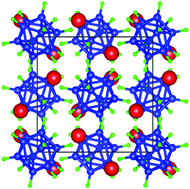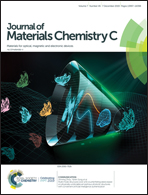Electronic shell structures, self-trapped excitons, and defect-bound excitons in Li2B12H12
Abstract
First-principles studies of electronic structures, excitons, and defects in Li2B12H12 reveal unique photophysical properties of Li2B12H12 and its potential as a neutron scintillator material. We identify the electronic shell structure in (B12H12)2−, which gives rise to strong chemical stability of (B12H12)2− and a large band gap of Li2B12H12. Based on hybrid functional calculations, we show that excitons in Li2B12H12 are strongly self-trapped and predict that the exciton excitation and emission are both in the UV range and are not related to the bright blue emission observed in the experiment. The experimentally observed blue emission in Li2B12H12 is likely due to the emission of excitons bound to hydrogen vacancies. The calculated strong localization and large exciton trapping energy at hydrogen vacancies indicate enhanced radiative recombination, while the calculated large Stokes shift suggests that the self-absorption and the resonance transfer of the excitation energy may be suppressed. These properties should promote efficient defect emission at room temperature. The efficient defect emission, combined with the large thermal neutron capture cross-section by Li and B and the efficient energy transfer between fast neutrons and H, suggests potential applications of Li2B12H12 as a thermal or fast neutron scintillator. Optical characterization of VH may also be used to monitor H and Li concentrations in Li2B12H12-based hydrogen storage materials and solid-state electrolytes in Li batteries.



 Please wait while we load your content...
Please wait while we load your content...